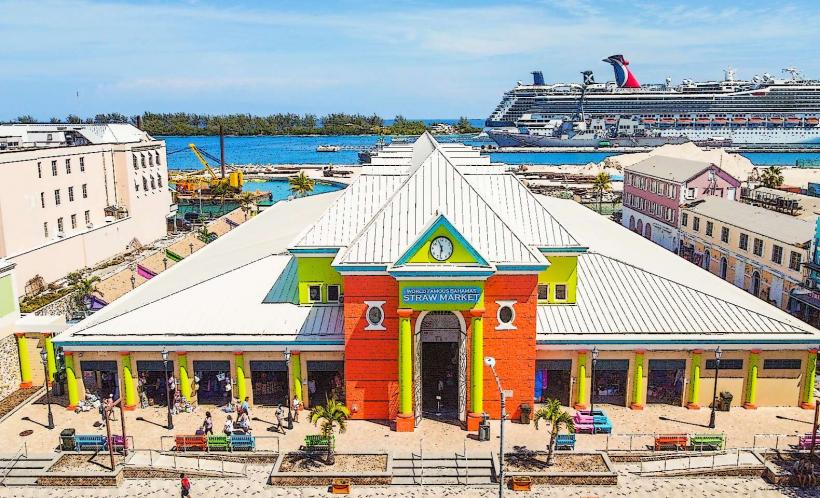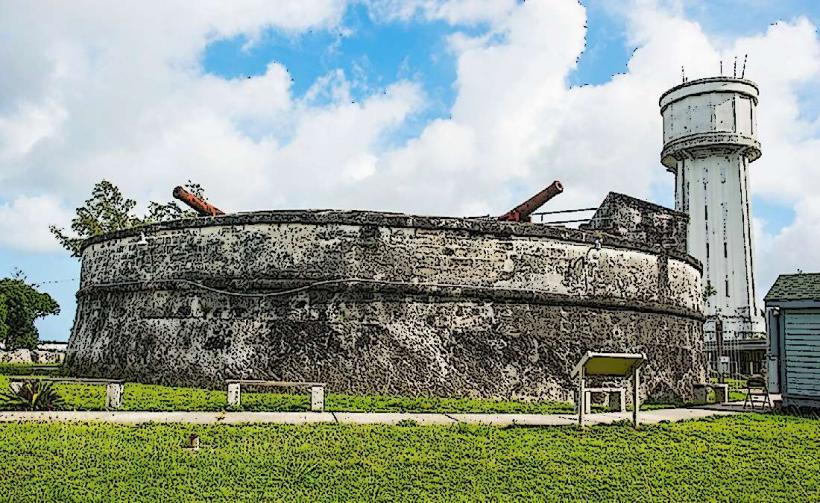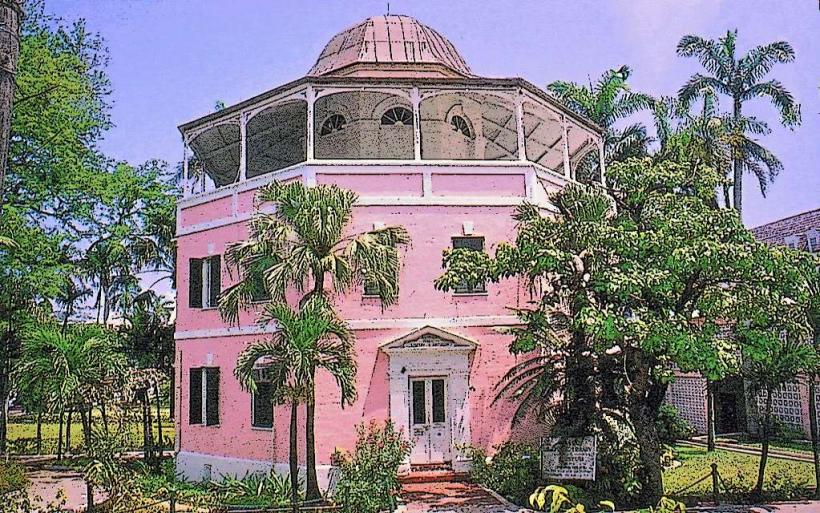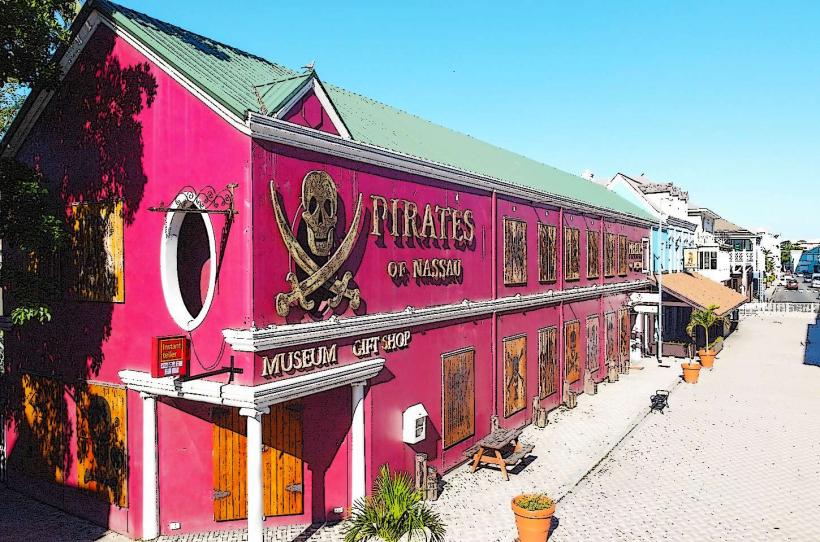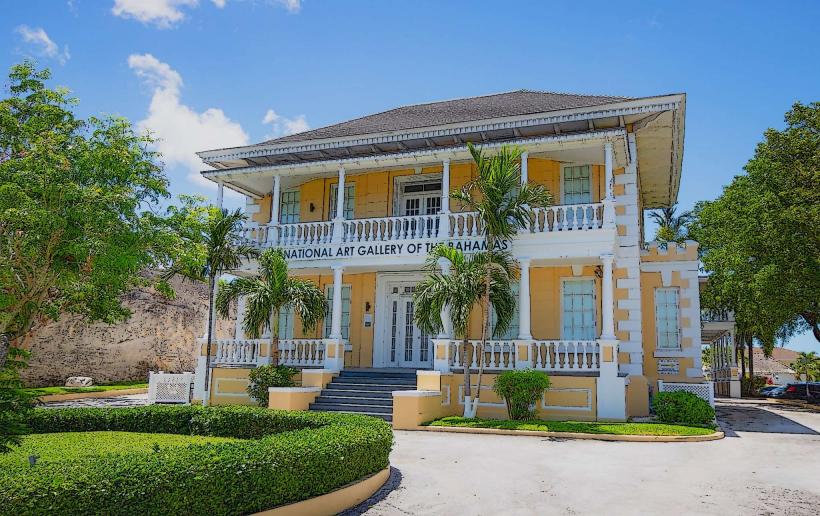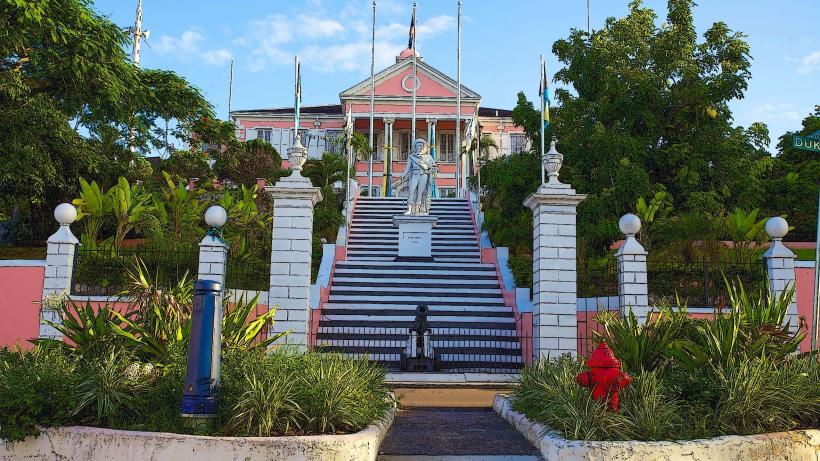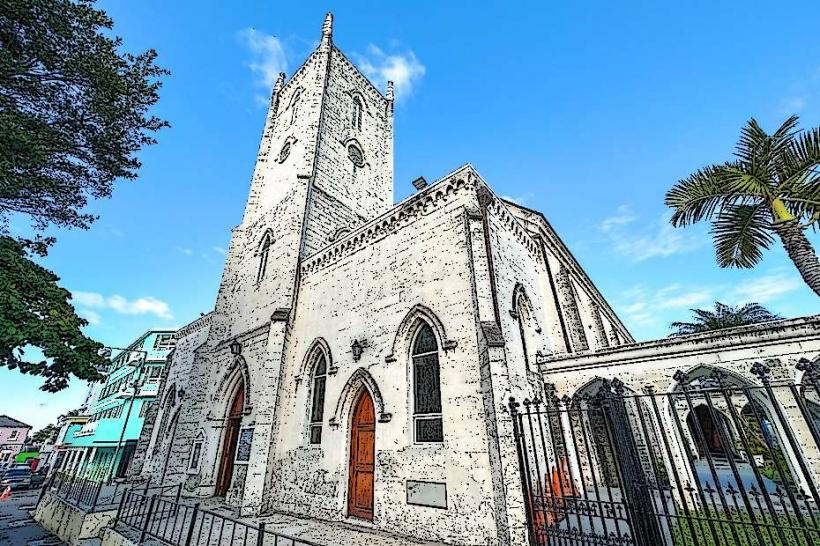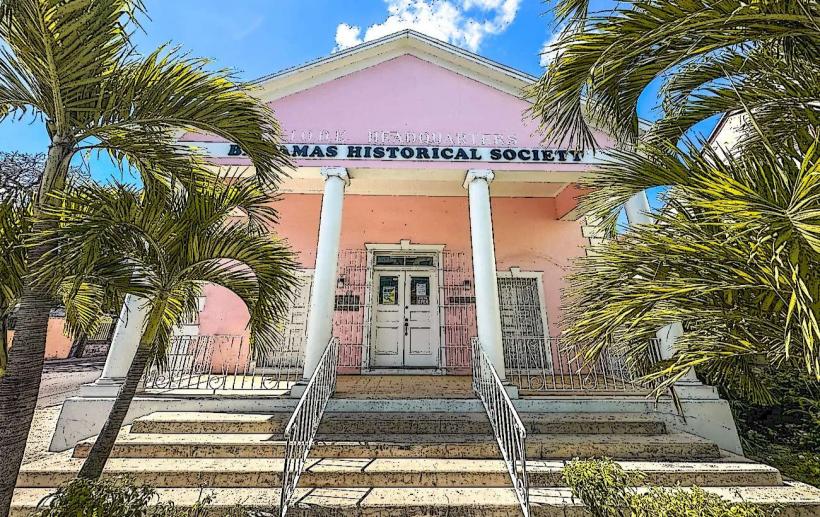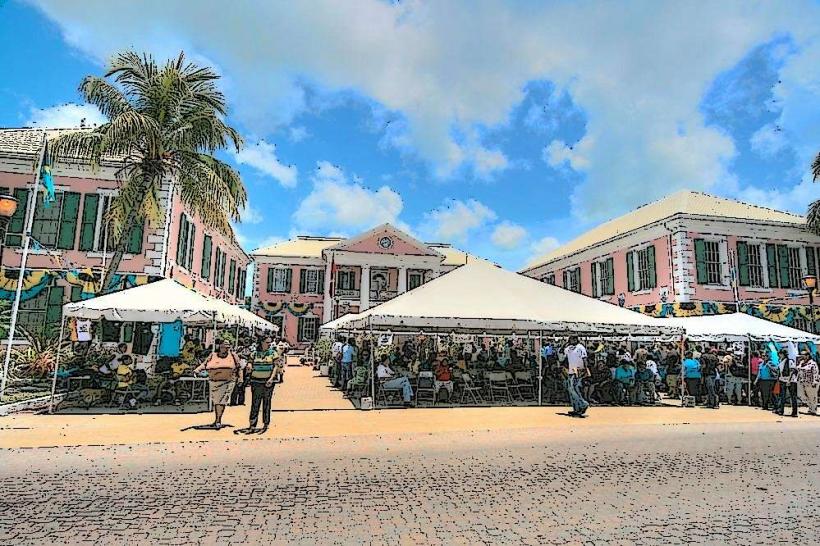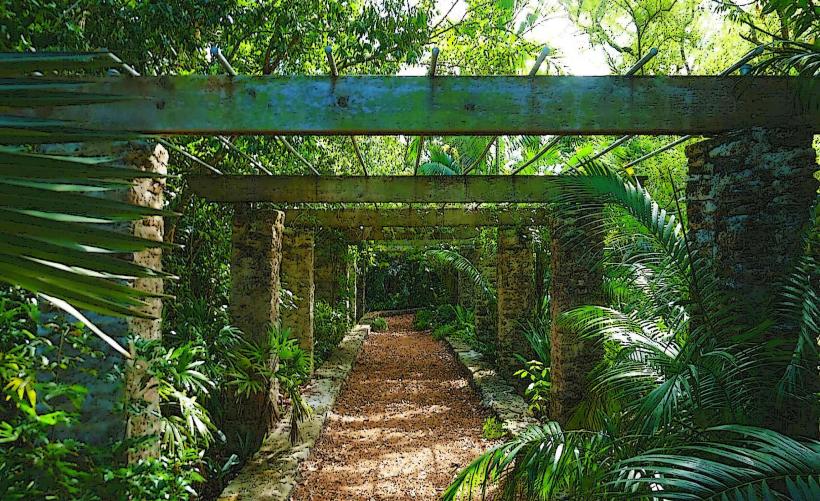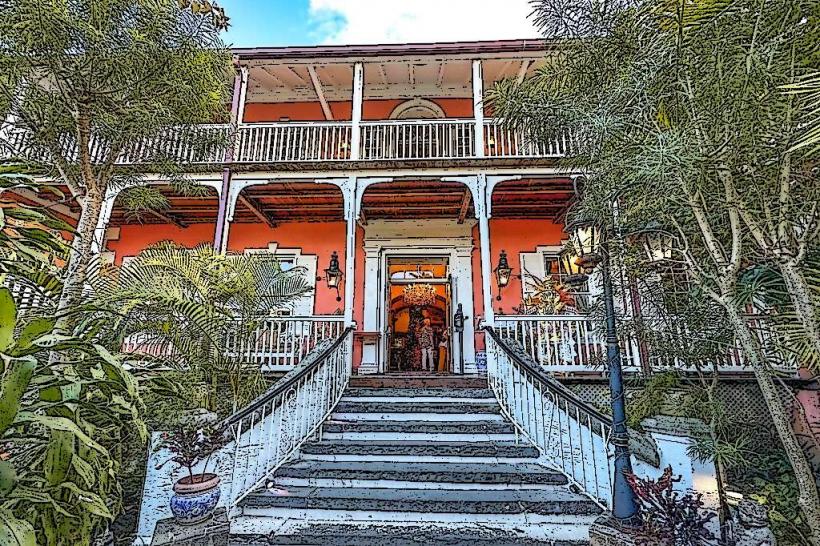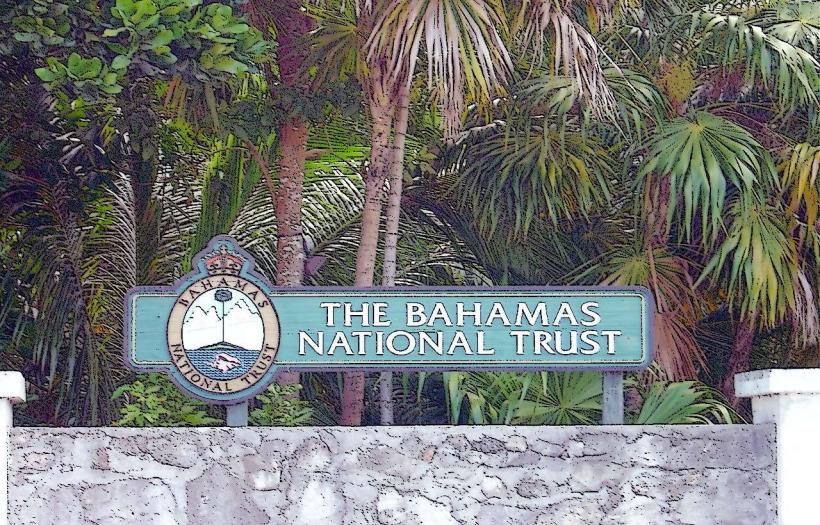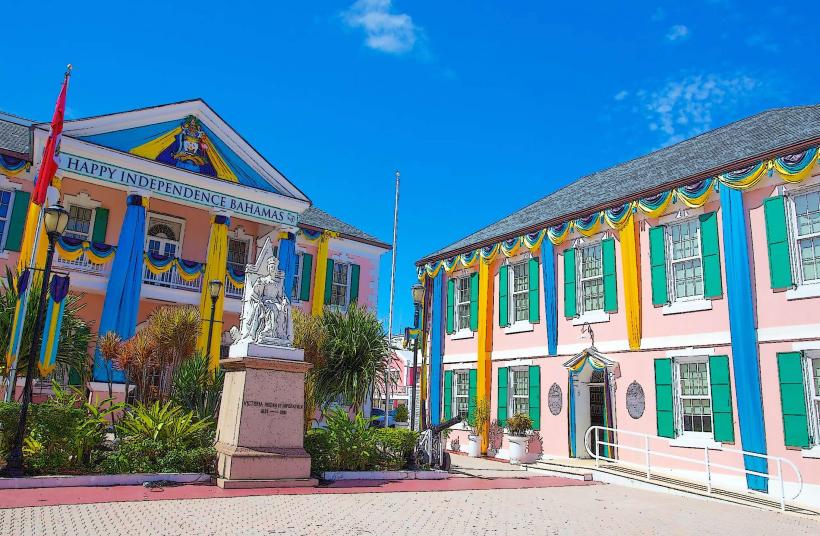Information
Landmark: Fort CharlotteCity: Nassau
Country: Bahamas
Continent: North America
Fort Charlotte is a historic fort located in Nassau, New Providence, in the Bahamas. It is one of the largest and most impressive forts in the country, offering a glimpse into Nassau's colonial past, military history, and its strategic role during the era of British rule. The fort was built to protect the city of Nassau from pirate attacks and potential invasions, reflecting the importance of Nassau as a British colonial outpost in the Caribbean.
Overview
- Location: Fort Charlotte is located on the western edge of Nassau, overlooking the harbor and offering expansive views of the surrounding waters. Its position on a hilltop made it an ideal location for monitoring and defending the port city.
- Built: Construction of the fort began in 1787 and was completed in 1793. It was named in honor of Queen Charlotte, the wife of King George III, who was the monarch of Great Britain at the time.
- Purpose: The fort was originally constructed as a defense against pirate attacks, and later, it became a key military installation during the colonial period. It was part of a series of fortifications built in Nassau to protect the city and its important harbor.
Historical Significance
Fort Charlotte was an integral part of Nassau’s defense system during the 18th and 19th centuries. The fortification was strategically designed to protect the city from sea-based threats, particularly pirates, who were a constant menace in the Caribbean during the Golden Age of Piracy. Additionally, it served as a British military stronghold during periods of conflict, including during the Napoleonic Wars.
- Pirate Threats: The Bahamas, and especially Nassau, was a notorious pirate haven during the 17th and 18th centuries. Fort Charlotte was part of the effort by the British to exert control over the region and counteract the influence of pirates like Blackbeard and Calico Jack.
- Defense of Nassau: As Nassau grew in importance as a port, particularly in the context of trade and the British Empire's interests in the Caribbean, Fort Charlotte played a crucial role in defending the city from both pirates and rival European colonial powers.
- Colonial Era: During British rule, the fort was a symbol of Nassau’s strategic military importance and was used by British soldiers to monitor and defend the area.
Fort Features
Fort Charlotte is notable for its size, design, and historical features. Though it never saw major action, it was an important part of the defense system in the Bahamas. Some of its key features include:
Location and Views: Positioned on a hill, the fort offers sweeping views of Nassau Harbor, the Atlantic Ocean, and the surrounding areas, making it an excellent vantage point for detecting approaching ships or enemy vessels.
Fortification Design: The fort is a classic example of late 18th-century military architecture, with thick stone walls, bastions, and a layout designed for defense. Its design includes:
- Cannon Emplacements: Fort Charlotte originally housed over 40 cannons placed strategically around the fort’s walls. These cannons were used to defend against attacks from the sea and to provide firepower in case of siege or assault.
- Moat: The fort is surrounded by a dry moat, a common defensive feature that made it difficult for attackers to approach the walls directly.
- Barracks: The fort housed military personnel in its barracks, which are still visible today. The barracks were essential for housing soldiers who would man the cannons and defend the fort.
- Underground Tunnels: The fort also contains underground passages and rooms that were used for storage, ammunition, and as living quarters for soldiers.
Water Gate: One of the unique features of Fort Charlotte is its water gate, which allowed for the movement of supplies and personnel directly from the harbor. This gate was important for the fort’s functionality, particularly during times when the fort was under siege or needed reinforcement.
Royal Navy Guardhouse: Within the fort, there is a small building used as the Royal Navy Guardhouse where soldiers would have stationed themselves to guard the fort.
The King's Staircase: A significant set of steps that leads up to the fort is known as The King’s Staircase. These stone steps were carved by hand by slaves, symbolizing the labor involved in building such military structures in colonial times.
Tourism and Modern-Day Significance
Today, Fort Charlotte is a popular tourist attraction and is open to the public for exploration. The fort offers visitors the chance to experience a piece of Bahamian history and to learn about Nassau’s colonial past.
- Guided Tours: Visitors can take guided tours of the fort to learn about its history, architecture, and role in defending Nassau. The tours often cover topics such as piracy, colonial warfare, and the life of soldiers stationed at the fort.
- Museum Exhibits: Inside the fort, there are historical exhibits that display artifacts from the fort's military past, including cannonballs, weaponry, and other relics from the colonial era.
- Scenic Views: The fort offers stunning views of Nassau Harbor, the Atlantis Resort, and the surrounding island of New Providence. It’s an excellent spot for sightseeing and photography.
- Historical Reenactments: Occasionally, the fort hosts reenactments and special events that showcase the historical role of Fort Charlotte, including military drills and displays of traditional weaponry.
Visiting Fort Charlotte
- Location: Fort Charlotte is located on West Hill Street, Nassau, New Providence.
- Opening Hours: The fort is generally open to the public from 9:00 AM to 5:00 PM every day. However, it’s always a good idea to check the current opening hours before visiting.
- Admission Fee: There is a modest admission fee for entering the fort, with discounts for children and groups. Some tours also offer the opportunity for a more in-depth experience at an additional cost.
Nearby Attractions
Fort Charlotte is close to several other significant landmarks in Nassau, making it an excellent stop for history enthusiasts:
- Pirates Museum: A museum that tells the story of Nassau’s pirate past, just a short distance away.
- Fort Fincastle: Another historical fort located nearby, offering a different perspective on Nassau’s defensive strategies during the colonial era.
- Queen’s Staircase: A stunning stone staircase, also carved by slaves, that leads to Fort Fincastle and offers views over Nassau.
Conclusion
Fort Charlotte is a historically rich site in Nassau, offering visitors a chance to step back in time and explore the colonial defenses that helped protect the city. With its stunning views, well-preserved architecture, and informative exhibits, Fort Charlotte stands as a testament to Nassau’s importance during the colonial era and its role in protecting the Bahamas from external threats. It remains one of the most popular historical attractions in Nassau, providing a unique glimpse into the island's past.


